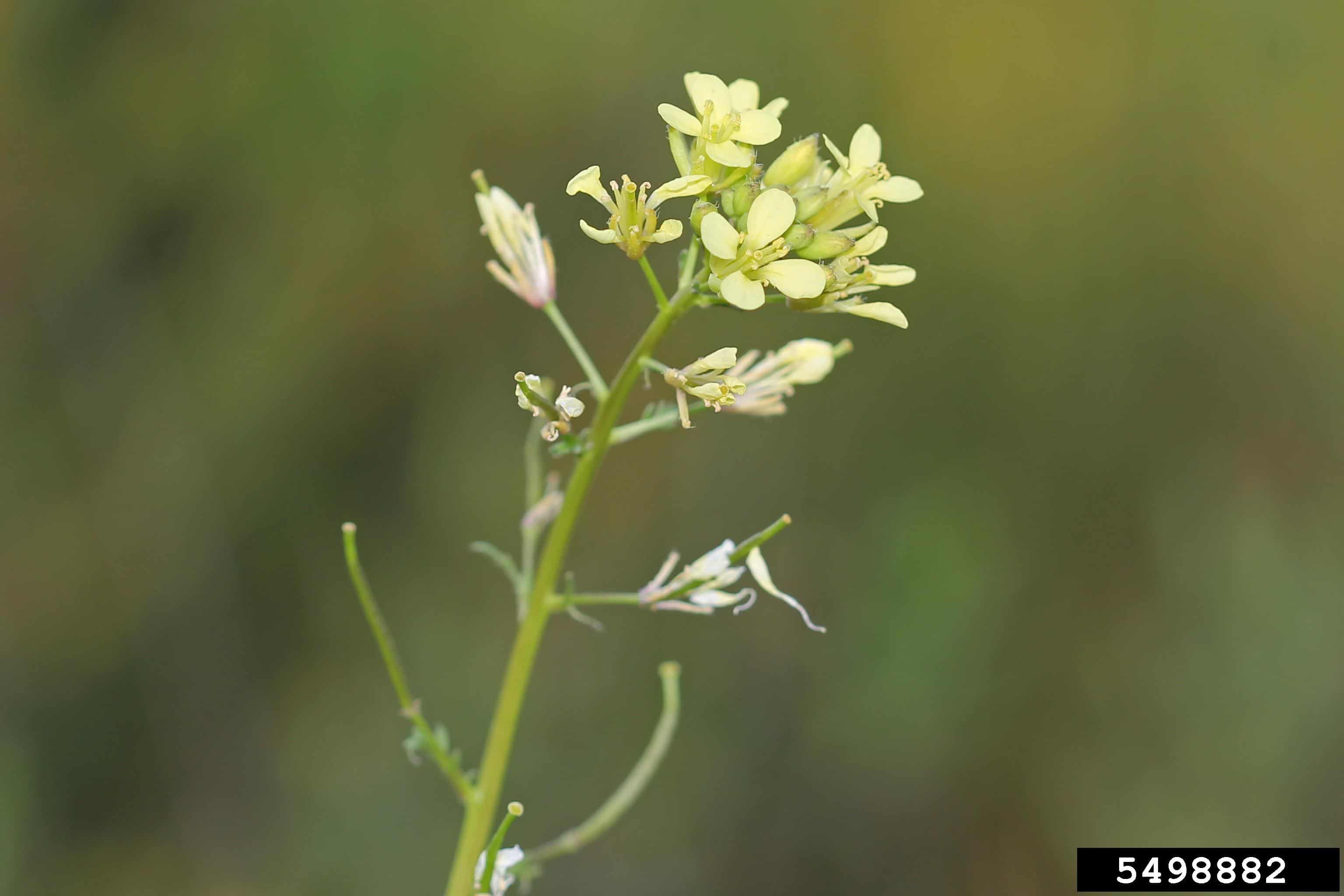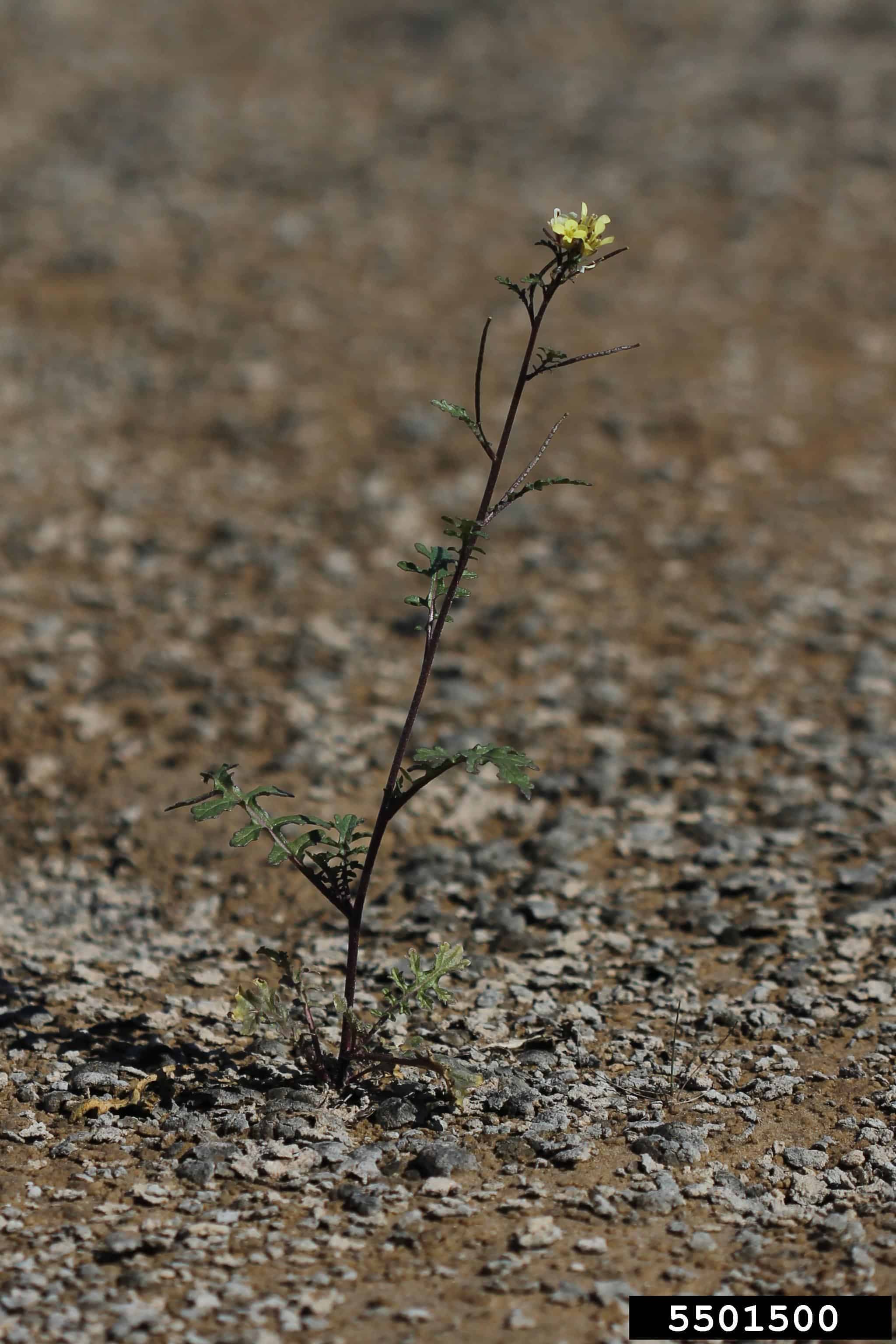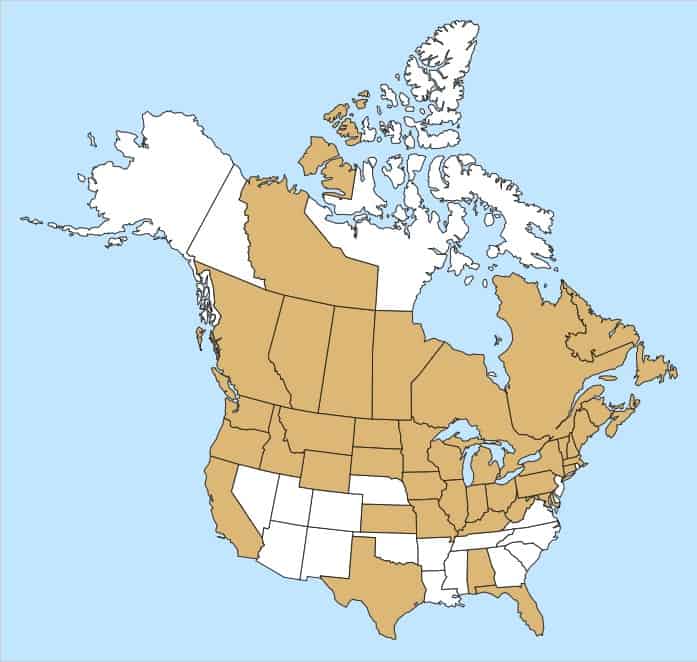Erucastrum gallicum
Overview
Aperçu
Regulation :
Remarques Réglementation:
- CFIA Weed Seeds Order - Class 3: Secondary Noxious Weed Seeds
Regulation Notes:
Distribution :
Répartition :
Native to southern and central Europe (USDA-ARS 2021). Widely introduced and naturalized in other parts of Europe, as well as North America, the Bahamas, and Korea (Warwick and Wall 1998; USDA-ARS 2021). In the United States it is abundant in the Midwest and sporadic but widespread elsewhere (Warwick and Wall 1998). Occurs across Canada except in Nunavut and Yukon Territories (Brouillet et al. 2010+).
Habitat and Crop Association :
Habitat et Cultures Associées :
Cultivated fields, old fields, gardens and lawns, orchards, railway yards, railway lines, ballast, waste ground, roadsides and disturbed areas (FNA 1993+; Warwick and Wall 1998; Darbyshire 2003). Also found in open rangelands, dry grassland areas, shores, beaches, river banks and floodplains (Warwick and Wall 1998). Most often found in sparsely vegetated habitats. A weed of cereal and oilseed crops (Warwick and Wall 1998).
Economic Use, cultivation area, and Weed Association :
Utilisation économique, zone de culture et association de mauvaises herbes :
Duration of Life Cycle :
Durée du cycle vital:
Annual
Dispersal Unit Type :
Type d’unité de dispersion :
Seed
General Information
RENSEIGNEMENTS GÉNÉRAUX
Erucastrum gallicum was introduced to North America in the early 1900s and spread across the continent via rail lines and contaminated grain shipments (Warwick and Wall 1998). E. gallicum produces an average of approximately 11,000 seeds per plant (Warwick and Wall 1998).
.
Erucastrum gallicum plant (Rob Routledge, Sault College, Bugwood.org)
Identification
Identification
-
Silique
Size
- Silique length: 20 – 50 mm (Warwick and Wall 1998)
Shape
- Silique is linear with transverse constrictions at regular intervals, generally cylindrical, but some are angular in 3 dimensions
Surface Texture
- Surface is smooth, with one central nerve on each side
Colour
- Silique is dull straw yellow
Other Features
- Silique is shiny green when immature
- The style remains at the end of the silique as a narrow, seedless segment (Warwick and Wall 1998)
- Seeds arranged in one row, alternating on either side of the inner partition of the silique.
- Each side of the silique has a single, central nerve (Warwick and Wall 1998)
-
Seed
Size
- Seed length*: 1.0 – 1.6 mm; width: 0.7 – 0.9 mm
*Note: minimum and maximum of 10 seeds in a normal range of this species using image measurement (ISMA 2020)
Shape
- Seed oval or oblong with one end rounded and the other truncate
Surface Texture
- Seed surface is ridged reticulate, with both stipples and transverse striations in the interspaces between the ridges
Colour
- Seeds are generally shiny reddish brown, some straw yellow coloured
Other Features
Hilum & Hilum area
- Hilum area is dark brown with white tissue
Other Features
- Seeds are slightly mucilaginous when wetted
- Seeds generally are grooved between the cotyledons and the radicle at the hilum end
- Hilum end appears notched with a pointed radicle end that generally does not protrude past the hilum

Dog mustard (Erucastrum gallicum) seeds




-
Embryo
Size
- Embryo fills the seed
Shape
- Embryo is bent
Endosperm
- Endosperm is scant or lacking
Other Features
- Nutritive tissue contained within cotyledons is yellow coloured, soft and oily
Identification Tips
CONSEILS POUR L’IDENTIFICATION
Relatively small, reddish-brown seeds with ridged reticulation the same colour as the surface with transverse striations in the interspaces are distinguishing features of E. gallicum seeds.

Dog mustard (Erucastrum gallicum) seeds




Additional Botany Information
AUTRES RENSEIGNEMENTS BOTANIQUES
Flowers/Inflorescence
- Flowers pale yellow with 4 petals, 5.0 – 7.0 mm long (Warwick and Wall 1998)

Erucastrum gallicum flower (Rob Routledge, Sault College, Bugwood.org)



Similar Species
ESPÈCES SEMBLABLES
Similar species are based on a study of seed morphology of various species, and those with similar dispersal units are identified. The study is limited by physical specimen and literature availability at the time of examination, and possibly impacted by the subjectivity of the authors based on their knowledge and experience. Providing similar species information for seed identification is to make users aware of similarities that could possibly result in misidentification.
Diplotaxis tenuifolia (L.) DC.
D. tenuifolia seeds are a similar size (length*: 0.9 – 1.4 mm; width: 0.7 – 0.9 mm), are generally green coloured with darker cotyledons and silvery surface reticulations. The radicle protrudes past the hilum in most seeds. E. gallicum seeds are reddish brown with the same colour reticulation and a shorter radicle in comparison.
Hirschfeldia incana (L.) Lagr.-Foss.
H. incana seeds are generally shorter than E. gallicum, and can be lighter or darker reddish-brown. H. incana seed generally lacks a groove between the radicle and cotyledons. The interspaces of the reticulation are generally smaller and pitted rather than the larger interspaces with transverse striations of E. gallicum.
*Note: minimum and maximum of 10 seeds in a normal range of this species using image measurement (ISMA 2020)
Click to select species
Cliquez pour sélectionner les espèces

Diplotaxis tenuifolia

Hirschfeldia incana
Comparison Window
Fenêtre de comparaison
MAIN SPECIES
ESPÈCES PRINCIPALES
Erucastrum gallicum

Erucastrum gallicum
Brassicaceae
Dog mustard (Erucastrum gallicum) seeds
MAIN SPECIES
ESPÈCES PRINCIPALES
Erucastrum gallicum

Erucastrum gallicum
Brassicaceae
Dog mustard (Erucastrum gallicum) seeds
MAIN SPECIES
ESPÈCES PRINCIPALES
Erucastrum gallicum

Erucastrum gallicum
Brassicaceae
Dog mustard (Erucastrum gallicum) seed
MAIN SPECIES
ESPÈCES PRINCIPALES
Erucastrum gallicum

Erucastrum gallicum
Brassicaceae
Dog mustard (Erucastrum gallicum) seed, side view
SIMILAR SPECIES
ESPÈCES SEMBLABLES
Diplotaxis tenuifolia

Diplotaxis tenuifolia
Brassicaceae
Wall-rocket (Diplotaxis tenuifolia) seeds
SIMILAR SPECIES
ESPÈCES SEMBLABLES
Diplotaxis tenuifolia

Diplotaxis tenuifolia
Brassicaceae
Wall-rocket (Diplotaxis tenuifolia) seeds
SIMILAR SPECIES
ESPÈCES SEMBLABLES
Diplotaxis tenuifolia

Diplotaxis tenuifolia
Brassicaceae
Wall-rocket (Diplotaxis tenuifolia) seed
Need ID Help?
Besoin d’aide pour l’identification?
Reference(s)
Référence(s)
Brouillet, L., Coursol, F., Meades, S. J., Favreau, M., Anions, M., Bélisle, P. and Desmet, P. 2010+. VASCAN, the database of vascular plants of Canada. http://data.canadensys.net/vascan/ Accessed April 26, 2021.
Darbyshire, S. J. 2003. Inventory of Canadian Agricultural Weeds. Agriculture and Agri-Food Canada, Research Branch. Ottawa, ON.
Flora of North America (FNA) Editorial Committee, eds. 1993+. Flora of North America North of Mexico [Online]. 22+ vols. New York and Oxford. http://beta.floranorthamerica.org. Accessed December 29, 2022.
Global Biodiversity Information Facility (GBIF) Secretariat. 2022. https://doi.org/10.15468/39omei Accessed via https://www.gbif.org/species/5375547 Accessed December 29, 2022.
Government of Canada (GC). 2016. Canadian Weed Seeds Order. https://laws-lois.justice.gc.ca/eng/regulations/SOR-2016-93/page-2.html (English) https://laws-lois.justice.gc.ca/fra/reglements/DORS-2016-93/page-2.html (French)
International Seed Morphology Association (ISMA). 2020. Method for Seed Size Measurement. Version 1.0. ISMA Publication Guide. https://www.idseed.org/authors/details/method_for_seed_size_measurement.html
U.S. Department of Agriculture-Agricultural Research Services (USDA-ARS). 2021. Germplasm Resources Information Network (GRIN), https://npgsweb.ars-grin.gov/gringlobal/taxon/taxonomysimple.aspx Accessed April 26, 2021.
Warwick, S. I. and Wall, D. A. 1998. The biology of Canadian Weeds. 108. Erucastrum gallicum (Willd.) O.E. Schulz. Canadian Journal of Plant Science 78: 155–165.




